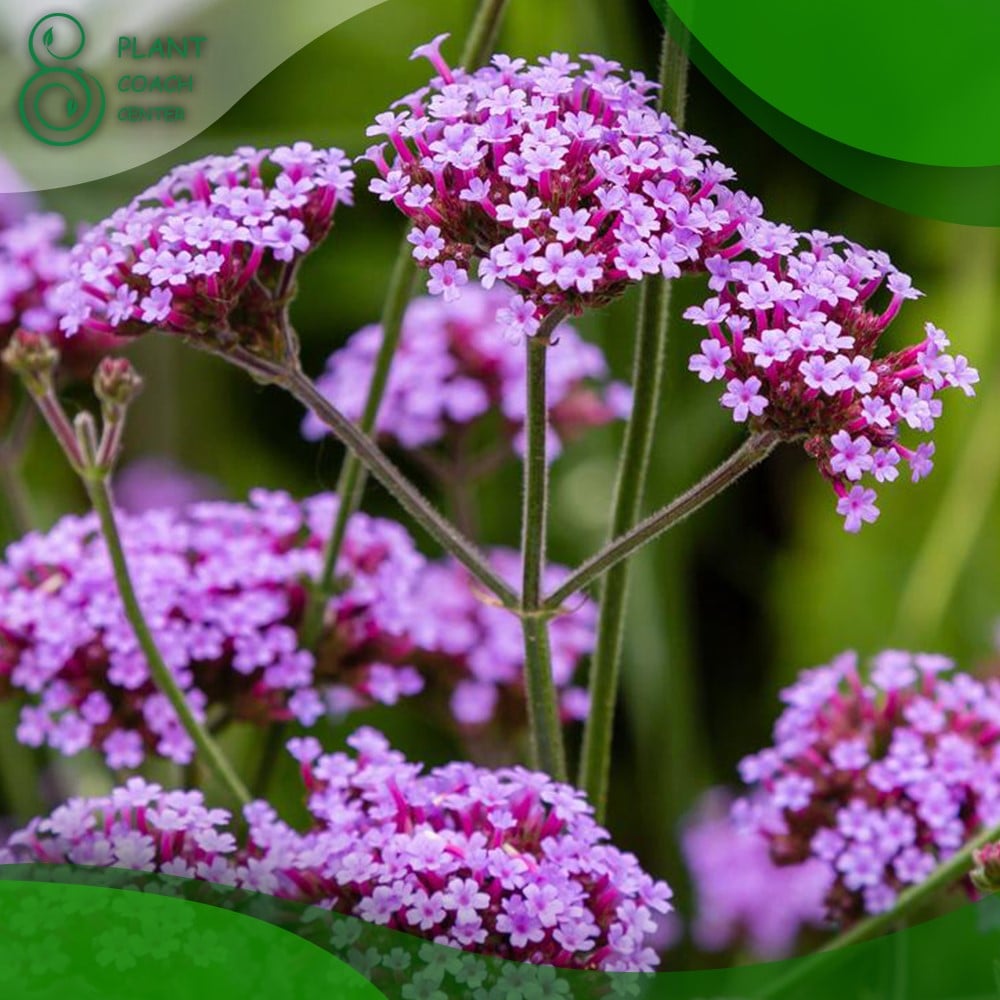When To Cut Back Verbena
Verbena bonariensis, commonly known as tall verbena or purple top vervain, is a striking perennial plant cherished by gardeners for its ethereal appearance and attractive qualities. With its slender, tall stems adorned with clusters of small purple flowers, this plant adds a touch of elegance and allure to any landscape.
In this comprehensive guide, we will explore the art of pruning Verbena bonariensis, a crucial aspect of plant coaching, and how to address common problems encountered during its growth.
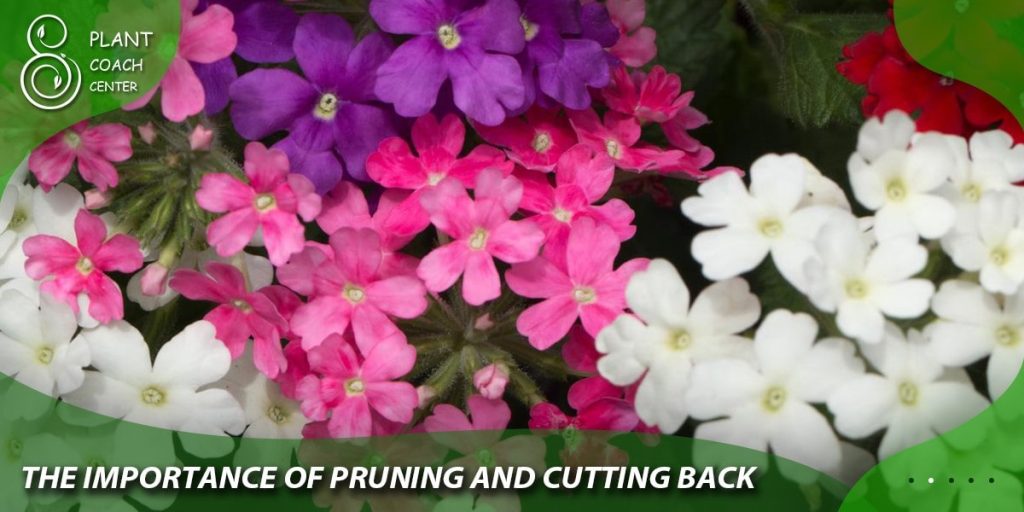
The Importance of Pruning and Cutting Back
Pruning is an essential horticultural practice that involves selectively removing parts of a plant, such as branches, leaves, or flowers. Regarding Verbena bonariensis, pruning plays a crucial role in maintaining its health, aesthetics, and overall performance in the garden. Understanding the significance of pruning and cutting back this captivating plant is fundamental for any gardener seeking to cultivate a thriving and visually appealing landscape.
- Encouraging Optimal Growth: Pruning contributes to the overall vigor and growth of Verbena bonariensis. The plant can focus its energy on producing new, healthy growth by removing dead or diseased stems. This promotes a fuller, lusher appearance, enhancing the plant’s visual appeal in the garden.
- Enhancing Flower Production: Proper pruning encourages the continuous production of flowers, which is a significant attraction of Verbena bonariensis. By deadheading spent blooms, gardeners prompt the plant to produce more flowers, prolonging the blooming period and creating a more vibrant and colorful display.
- Controlling Size and Shape: Left unattended, Verbena bonariensis can become leggy and overgrown. By selectively cutting back certain stems, gardeners can control the plant’s size and shape, keeping it within the desired boundaries of the landscape design. This helps maintain an organized and tidy appearance in the garden.
- Mitigating Disease and Pest Issues: Pruning is important to plant health management. Regularly inspecting Verbena bonariensis allows gardeners to promptly identify and remove any signs of disease or pest infestations. Pruning away affected areas can prevent the problem from spreading to other parts of the plant or neighboring plants.
- Rejuvenating Older Plants: As Verbena bonariensis matures, some stems may become woody and less productive. Proper pruning techniques can rejuvenate older plants by selectively removing older stems and encouraging the growth of new, healthier ones. This helps extend the plant’s lifespan and vitality in the garden.
- Stimulating New Growth: Light pruning of Verbena bonariensis stimulates new growth and branching. This particularly benefits younger plants or those that have become sparse or leggy over time. The encouragement of new growth contributes to a fuller and more aesthetically pleasing plant.
- Reducing Wind and Storm Damage: In regions with strong winds or frequent storms, pruning can reduce the risk of damage to Verbena bonariensis. By removing excessive growth and thinning out dense areas, gardeners can make the plant more resilient to harsh weather conditions.
Pruning and cutting back Verbena bonariensis are vital practices for maintaining the plant’s health, appearance, and overall performance in the garden. Gardeners who understand the importance of pruning can harness its benefits to encourage optimal growth, control size, and shape, enhance flower production, and mitigate potential issues related to disease and pests. By incorporating proper pruning techniques into their plant coaching strategies, gardeners can ensure that Verbena bonariensis remains a stunning centerpiece in their landscapes, attracting pollinators and providing lasting beauty year after year.
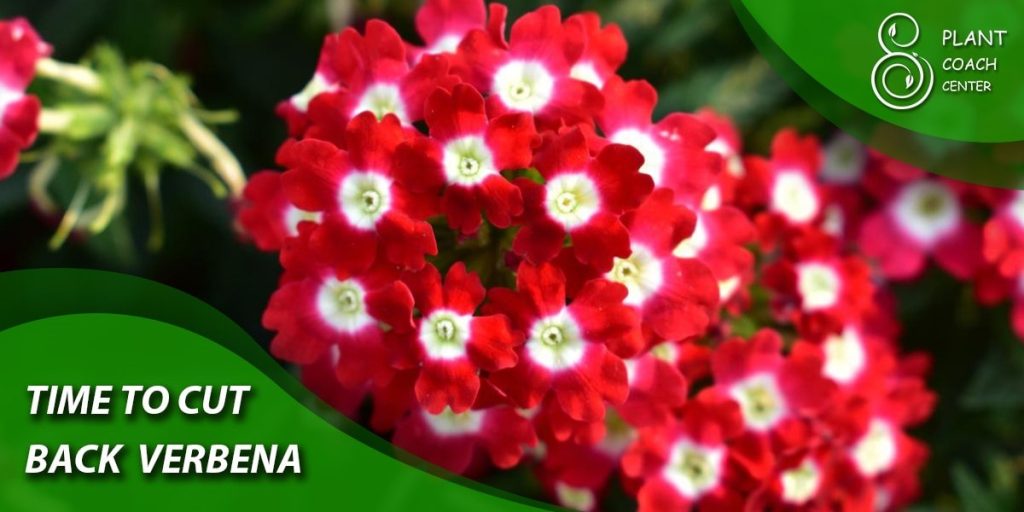
Identifying the Right Time to Cut Back Verbena bonariensis
Seasonal Considerations
As the days grow longer and temperatures rise in spring, the dormant Verbena bonariensis awakens from its winter slumber. Spring pruning allows gardeners to remove any damaged or dead stems and encourages vigorous new growth.
Summer pruning can be selectively done to shape the plant and control its size. Deadheading spent flowers will prolong the blooming period, encouraging the Verbena bonariensis to produce more blooms throughout the season.
Fall pruning should be approached with caution. While it may be tempting to prune heavily before winter sets in, some gardeners prefer to leave the plant mostly intact during the colder months to provide natural protection from frost.
Recognizing Growth Stages for Pruning
Pruning strategies differ between young and established Verbena bonariensis. Young plants benefit from light pruning to stimulate branching and create a bushier, fuller appearance. On the other hand, well-established plants can handle more aggressive pruning to remove old or weak stems and rejuvenate growth.
Signs that Verbena bonariensis Needs Pruning
Observing the plant for signs of decline or overgrowth can guide gardeners in determining whether and how much to prune. Common signs include leggy growth, fewer flowers, and overcrowding. By addressing these issues promptly, gardeners can help maintain the plant’s health and aesthetics.
Tools and Techniques for Pruning
Equipping oneself with the right tools is essential for effective pruning. Sharp, clean pruning shears are indispensable for maintaining plant health and achieving precise cuts. Before pruning, it is essential to sanitize the tools to prevent the spread of disease.
Proper Pruning Techniques for Verbena bonariensis
When pruning Verbena bonariensis, always cut just above a leaf node to encourage new growth in the desired direction. Avoid cutting too close or leaving long stubs, which may lead to disease and hinder the plant’s natural shape.
Precautions and Best Practices
Gardeners should exercise caution when pruning Verbena bonariensis during the growing season, as some beneficial insects, such as butterflies and bees, may rely on the plant as a nectar source. Prioritize selective pruning to avoid disrupting the plant’s ecological role.
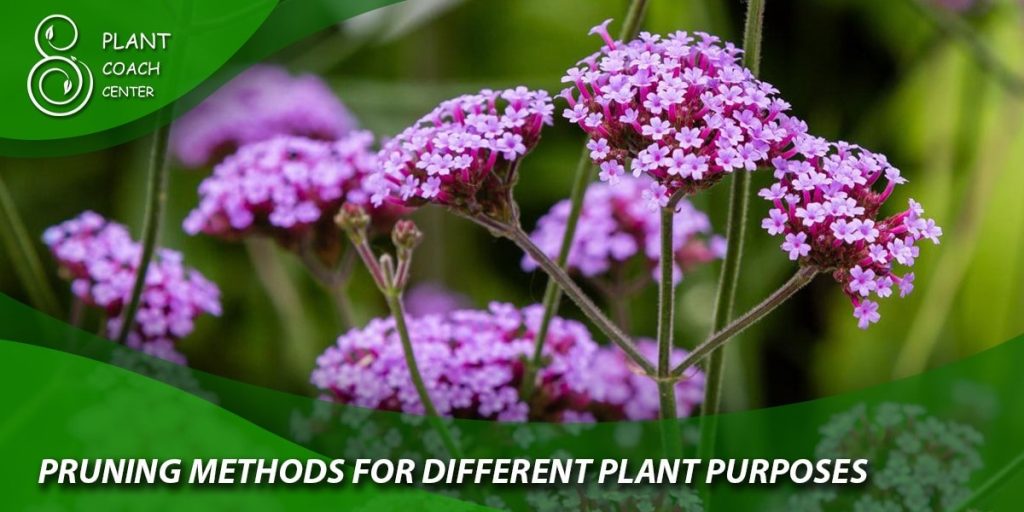
Pruning Methods for Different Plant Purposes
Promoting Growth and Vigor
To encourage healthy growth and vigor, gardeners can employ various pruning techniques. Removing dead or weak stems allows the plant to focus its energy on new growth. Cutting back one-third of the plant’s height during the growing season stimulates fresh foliage and branching, resulting in a denser and more vibrant plant.
Shaping and Controlling Size
Selective pruning is the key for gardeners aiming to shape their Verbena bonariensis or control its size. Trimming back stems that extend beyond the desired height or width helps maintain a tidy appearance. Remember to maintain the plant’s natural form to preserve its allure in the garden.
Enhancing Flowering and Seed Production
Deadheading, the process of removing spent flowers, effectively promotes continuous blooming and seed production in Verbena bonariensis. By eliminating fading blooms before they set seed, the plant channels its energy into generating new flowers, prolonging the blooming period and creating a visually appealing display.
Dealing with Disease and Pest Issues
Pruning plays a vital role in disease and pest management. Gardeners should regularly inspect their Verbena bonariensis for signs of infestation or infection. If detected, promptly prune affected parts and dispose of them away from the garden to prevent the spread of pests and diseases.
Potential Challenges and Problems
While Verbena bonariensis is a resilient and low-maintenance plant, it may still encounter challenges and problems during its growth. Awareness of these issues and how to address them is crucial for maintaining the health and vitality of this beautiful perennial in your garden.
- Over-Pruning or Improper Techniques: One of the common challenges in pruning Verbena bonariensis is the risk of over-pruning or using improper techniques. Excessive cutting can stress the plant and reduce vigor or plant decline. Additionally, cutting too close to the main stem or leaving long stubs can create entry points for diseases, compromising the plant’s overall health.
Solution: To avoid over-pruning, follow the one-third rule: never remove more than one-third of the plant’s total growth at a time. Use sharp, clean pruning tools to cut precisely just above a leaf node or lateral shoot. This ensures proper healing and minimizes the risk of disease transmission.
- Dealing with Overgrown Plants: Neglected or overgrown Verbena bonariensis can become straggly and less visually appealing. Tackling an overgrown plant requires careful planning to avoid causing undue stress.
Solution: Instead of cutting back the entire plant immediately, opt for gradual rejuvenation pruning. For a few seasons, systematically remove older stems, encouraging new growth to take their place. This approach allows the plant to recover and adjust to the pruning process without significant shock.
- Managing Pruning for Continuous Bloom: Gardeners aiming to have Verbena bonariensis blooming throughout the growing season may face challenges timing their pruning efforts. Heavy pruning during the flowering season can inadvertently remove potential flower buds, affecting the plant’s bloom cycle.
Solution: Deadheading, or removing spent flowers, is key to promoting continuous bloom. Regularly deadheading the fading blooms, the plant redirects its energy into producing new flower buds, ensuring an extended blooming period.
- Encountering Pests and Diseases: Verbena bonariensis is relatively resistant to pests and diseases but is not immune. Aphids, spider mites, and powdery mildew are some common issues that may affect this plant.
Solution: Regularly inspect your Verbena bonariensis for any signs of pest infestations or disease symptoms. If detected early, you can apply appropriate treatments such as insecticidal soap for pests or fungicides for diseases. Integrated pest management practices, like attracting natural predators and maintaining good garden hygiene, can also help manage these issues effectively.
- Environmental Stressors: Verbena bonariensis may face environmental stressors like extreme temperatures, drought, or waterlogged soil, especially if not provided with suitable growing conditions.
Solution: Choose a planting location that offers well-draining soil and adequate sunlight. Providing consistent watering, especially during dry spells, helps prevent drought stress. Avoid overwatering or planting in areas prone to waterlogging to prevent root rot.
By recognizing and proactively addressing these potential challenges and problems, gardeners can ensure the long-term health and splendor of Verbena bonariensis in their landscapes. Implementing proper pruning practices and maintaining ideal growing conditions will help this remarkable plant thrive and continue to be a delightful addition to any garden.
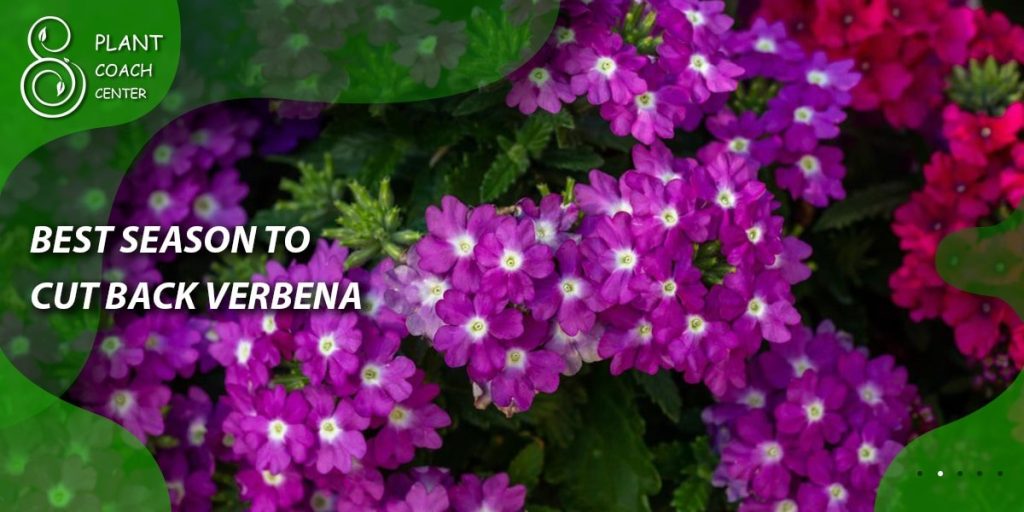
Asked Questions about Pruning Verbena bonariensis
Can I Cut Back Verbena bonariensis in Winter?
It’s generally best to avoid heavy pruning in winter, as the plant benefits from some protection offered by its old growth during colder months. However, gardeners can perform light maintenance, removing dead or damaged stems as needed.
How Much Should I Prune at Once?
To maintain the plant’s health, avoid removing more than one-third of its overall growth at a time. Gradual pruning allows the plant to recover without excessive stress.
Will Pruning Help Prevent Disease?
Pruning can contribute to disease prevention by removing infected plant parts. However, proper sanitation of pruning tools is equally crucial to prevent disease transmission.
Plant Coaching for Verbena bonariensis
Understanding Plant Needs and Care
Successful plant coaching begins with a deep understanding of Verbena bonariensis’s requirements. Adequate sunlight, well-draining soil, and appropriate watering are essential for its health and vigor.
Tailoring Coaching to Individual Gardens
Each garden is unique, and gardeners must adapt their plant coaching strategies accordingly. Climate, soil conditions, and surrounding flora are significant in tailoring care to suit the plant’s needs.
Troubleshooting and Tips for Success
Effective plant coaching involves identifying and addressing challenges early on. Solving common problems is crucial for plant health, from diagnosing nutrient deficiencies to combatting pests.
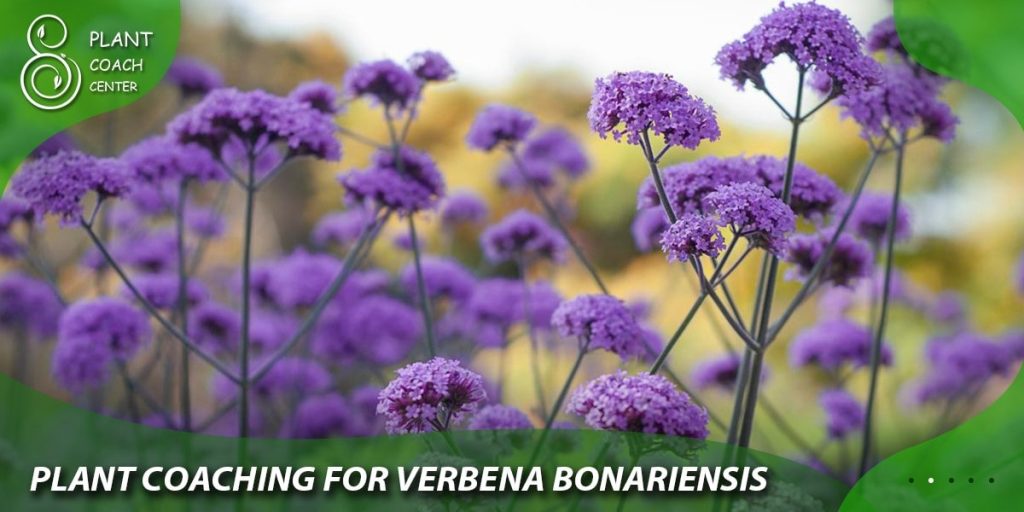
Other Common Problems and Solutions for Verbena bonariensis
Pests and Diseases
Verbena bonariensis is generally resilient but occasionally faces aphids, powdery mildew, and spider mites. Integrated pest management techniques, like natural predators and proper sanitation, can help manage these problems.
Environmental Stressors
Extreme temperatures, drought, or waterlogged soil can stress the plant. Providing suitable conditions and adjusting watering practices can help Verbena bonariensis thrive.
Nutrient Deficiencies
Yellowing leaves or stunted growth may indicate nutrient deficiencies. Regular soil testing and appropriate fertilization can address these issues and enhance the plant’s vitality.
Taking Care of Verbena bonariensis After Pruning
Post-Pruning Care Instructions
After pruning, Verbena bonariensis needs a little extra care to recover fully. Regular watering, appropriate fertilization, and a layer of organic mulch can support the plant during this period.
Watering and Fertilizing Considerations
Consistent and adequate watering is essential, especially after pruning, to help the plant recover. Applying a balanced fertilizer during the growing season can boost growth and flowering.
The Beauty of Verbena bonariensis in the Garden
Versatility in Landscape Design
Verbena bonariensis’s slender form and tall blooms make it a versatile addition to any garden. Whether planted in borders, containers, or wildflower meadows, it adds a vertical accent and attracts pollinators.
Attracting Pollinators and Beneficial Insects
The nectar-rich flowers of Verbena bonariensis are a magnet for butterflies, bees, and other beneficial insects, making it an essential plant for supporting pollinators in the garden.
Final words
In conclusion, mastering the art of pruning Verbena bonariensis is a skill that contributes to the plant’s health, longevity, and overall beauty. Gardeners can make informed pruning decisions by understanding the plant’s growth cycles and requirements.
Careful attention to pruning techniques and post-pruning care ensures a vibrant and thriving Verbena bonariensis in the garden. As plant coaching continues to evolve, gardeners can use these insights to cultivate thriving landscapes that showcase the captivating beauty of this remarkable plant.
When is the best time to prune Verbena bonariensis?
Prune in spring after the last frost or lightly deadhead during the growing season.
Can I cut back Verbena bonariensis in winter?
Light maintenance pruning is acceptable, but avoid heavy pruning during winter.
How much should I prune at once?
Stick to the one-third rule, never removing more than one-third of the plant's growth.


